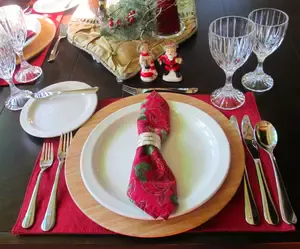Etiquette-ful Curiosity and Why
We Should Practice It

Etiquette-ful curiosity is a good quality to possess. When you appear interested in others, you become more interesting as well. It is a trait that automatically invites reciprocity when used appropriately.
However, as the saying goes, "curiosity killed the cat." Learning to distinguish that fine line that separates being interested and inquisitive with being nosey and meddlesome is an important and ever-developing etiquette skill set.
Recognize When You’re Being Meddlesome
You have probably heard someone say, “Out of curiosity….” and then pose a question. Have you noticed this is often prefaced with a statement such as, “I probably shouldn’t ask, but…?”
Simply by posing your question this way, you’ve entered the domain of gossip, snooping, and wanting to know “just because.” But let's be completely honest, it’s because we want first-hand information we can then share with someone else. Come on . . . we’ve all done it.
When you do cross the boundary into gossip territory, you may attempt to use humor to cover the faux pas. Rather than do this, or even if you already have, just apologize.
- “Jen, I’m sorry for trying to be funny in a situation that I needed to be more respectful about.”
- “James, I asked for too much information, and my over-zealous curiosity got the better of me. Sorry.”
A change of subject following your apology can help put your conversation back on track.
Practicing Etiquette-ful Curiosity
What does etiquette-ful curiosity look like?
- You show you want to engage with another person(s) and acknowledge their presence.
- Listen with interest to what others are saying. You “take in” the other person’s thoughts and feelings.
- Ask friendly conversational questions to learn more and sense what another person wants to talk about.
- Remain open-minded, agreeable, and mindful.
“Curiosity is, in great and generous minds, the first passion and the last.”
~ Samuel Johnson
People know when your interest in them is authentic. If attention is given, your body language, eye contact, and the questions you ask, will tell a conversation partner how important the interaction is to you.
You can help ensure your authenticity when you practice gracious social curiosity.
- Look for the positive in every situation.
- Observe the context of where you are, who you are with, and what seems to be going on.
- Enter into conversations on what appears to be the surface of things, not taking for granted that you know what’s going on.
- Ask yourself, “Am I really listening?”
- Ask yourself, “What can I learn here that will teach me more about this person or situation?”
- Purposefully seek the kind thing to do or say.
As etiquette helps us live our lives more simply, pleasantly and elegantly, we receive more benefit by mindfully observing and practicing social behaviors that mark us as interested, interesting, and kind. Make time for curiosity. Be intentionally curious about others to find out something new, without judgment, and your effort will be reciprocated.














